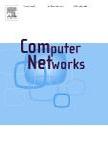版权所有:内蒙古大学图书馆 技术提供:维普资讯• 智图
内蒙古自治区呼和浩特市赛罕区大学西街235号 邮编: 010021

作者机构:Northwestern Polytech Univ Xian 710129 Shaanxi Peoples R China
出 版 物:《COMPUTER NETWORKS》 (Comput. Networks)
年 卷 期:2025年第258卷
核心收录:
学科分类:0810[工学-信息与通信工程] 0808[工学-电气工程] 08[工学] 0812[工学-计算机科学与技术(可授工学、理学学位)]
主 题:Digital twin Industrial wireless network Routing algorithm Load balancing Real-time transmission
摘 要:Digital twin is a transformative technology with the power to reshape the future of industries, which enables accurate simulation and optimization of the production process by creating virtual copies of physical entities. Industrial wireless network such as ISA100.11a, as an indispensable communication bridge in digital twin, provides a stable and reliable data transmission pathway for all-element connectivity. However, the access of a large number of nodes increases the risk of network congestion and poses a challenge to the real-time network transmission. Therefore, the intention of our research is to deal with network congestion by establishing a load balancing routing algorithm. First, considering the time-triggered characteristic of industrial scenarios, a directed acyclic graph model is established for multi-periodic communication streams. We analyze the causes of load imbalance in multi-source single-sink topology, and prove that choosing optimal path scheme is an NP- hard problem by generalizing to the multidimensional bin packing problem. Then, we theoretically derive the average load of the hierarchy, establish a loss function characterizing the degree of hierarchical load balancing, and propose a hierarchical load balancing strategy based on the black-winged kite algorithm by establishing a mapping relationship. Finally, a scheduling constraint model is introduced to evaluate the superiority of the proposed algorithm. Experimental validation shows that the proposed algorithm reduces 70.80%, 27.15%, 15.57%, 14.01% in terms of loss function value and 23.52%, 4.71%, 5.19%, 4.64% in terms of total delay as compared to Dijkstra algorithm, Greedy algorithm, Bat algorithm and Deep Q-Networks respectively.